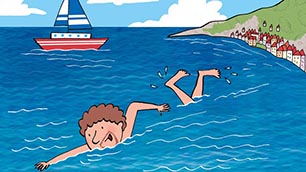I. Direct Object Pronouns and the passato prossimo
In Act 8, we learned the direct object pronouns: mi, ti, lo, la, ci, vi, li, le. We have also seen that when a verb is conjugated with the auxiliary verb avere in the passato prossimo, the participle does not change. The exception to this rule is when a third-person, direct object pronoun (lo, la, li, le) precedes the verb. When this happens, the past participle must agree with the pronoun in gender and number.Following are some examples. Note that the singular direct object pronouns, lo and la, are elided with the conjugated forms of avere, whereas li and le are not.





















